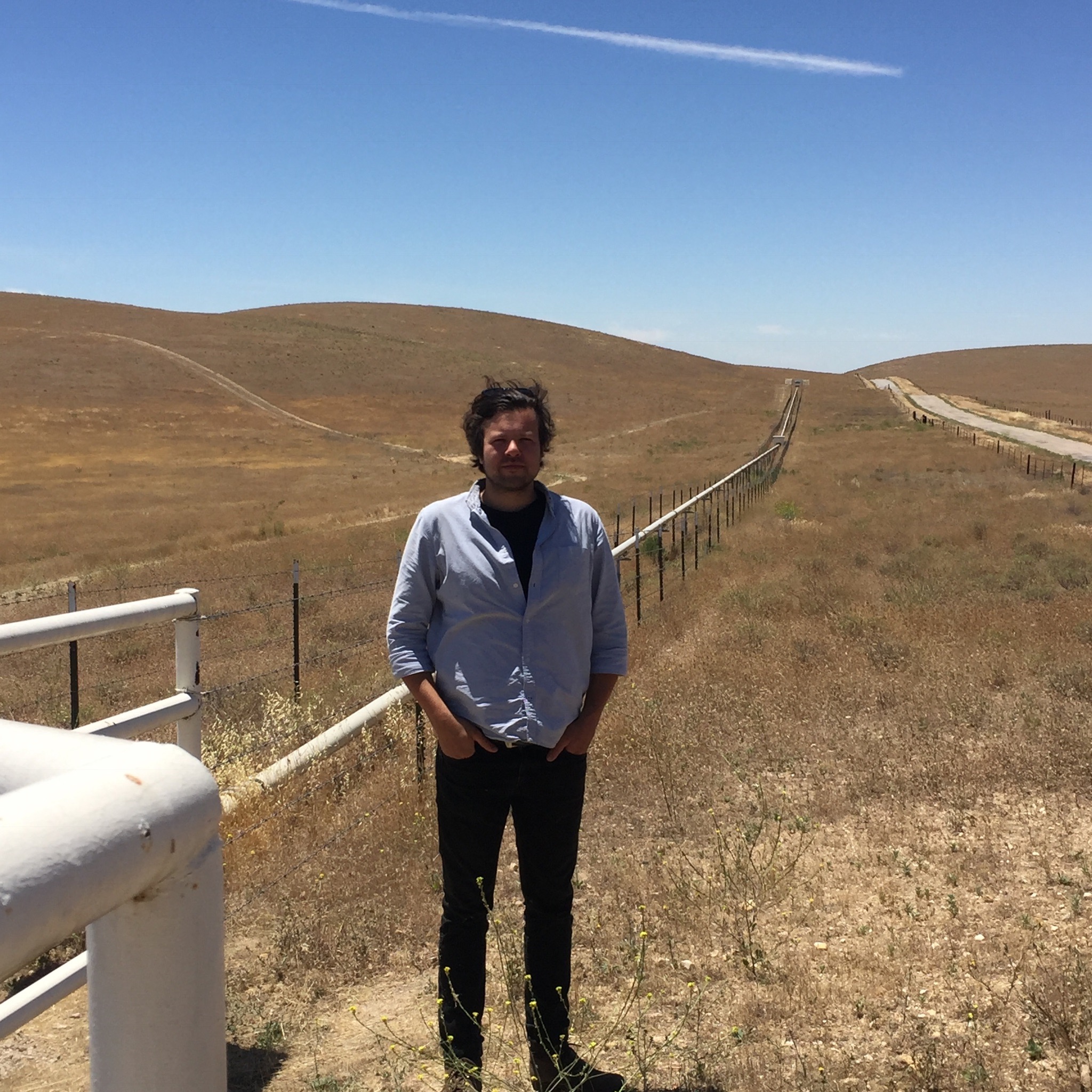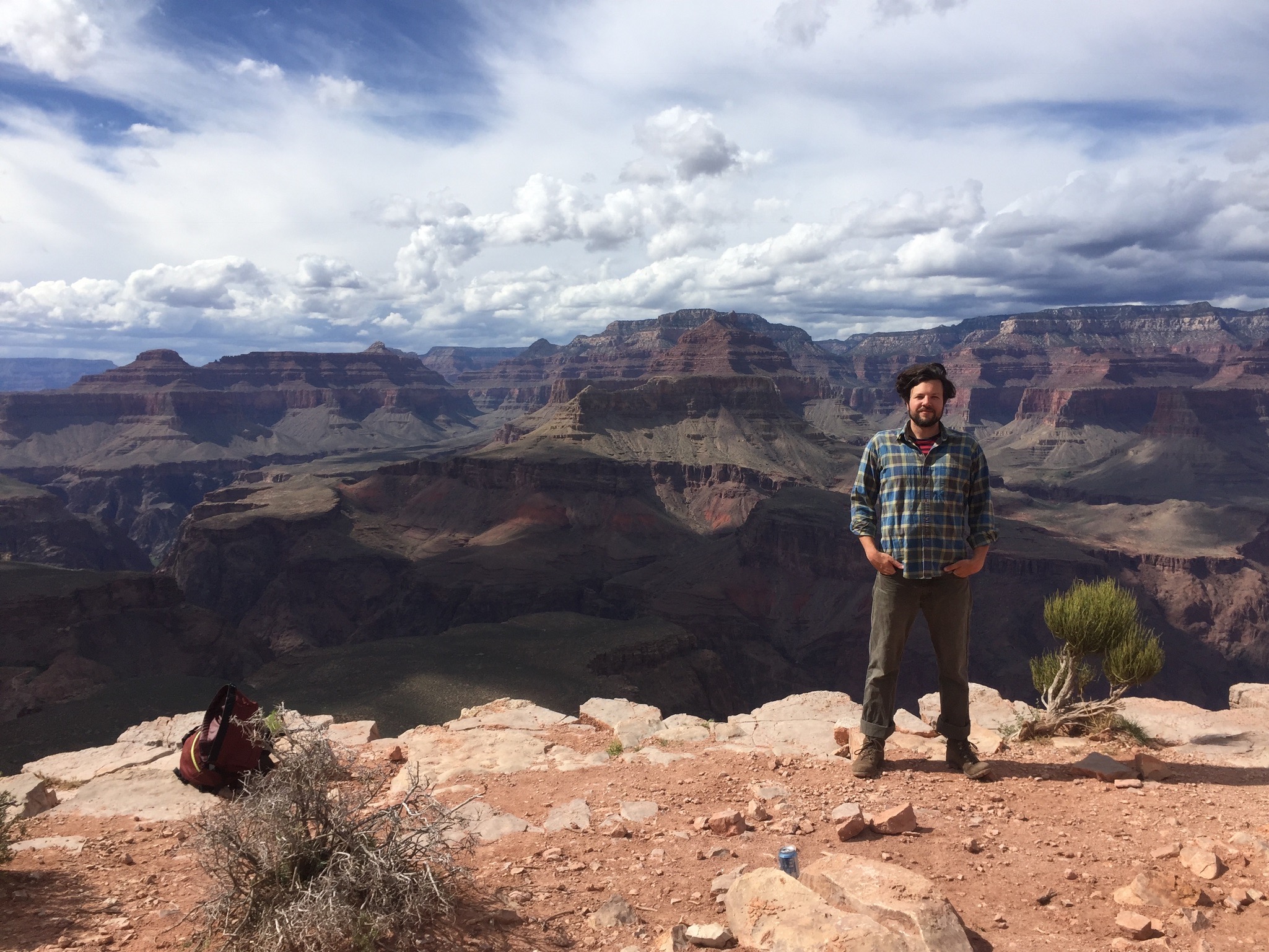
|
Brent Delbridge Email: bdelbridge@fas.harvard.edu Postdoctoral Fellow Harvard Seismology Group Department of Earth and Planetary Sciences Harvard University Download CV |
|
Research Interests My research focuses on applying tools from my background in Applied Math and Physics to solve a broad range of geophysical problems in the fields of seismology, tectonics, and geodesy. I use GPS, strainmeters, ARGO floats and InSAR to measure deformation near active faults, volcanos and landslides, and use theoretical seismology and mineral physics to probe the Earth’s deep interior. The goal of my research is to elucidate the dynamic processes occurring on and within the Earth, to better understand Earth structure, formation, and evolution. Often this requires the development of new theoretical frameworks to mathematically describe physical processes, or to constrain geophysical models with data. In previous research endeavors this has consisted of detecting subtle strain signals associated with faulting in the crust from strainmeters (Delbridge et al. 2020c), measuring landslide deformation using remote sensing (Delbridge et al. 2016), characterizing the interactions between seismicity and tectonic processes from earthquake catalogs (Delbridge et al. 2017) and elucidating the eruptive dynamics of submarine eruptions from arrays of temperature/salinity profiling floats (Mittal and Delbridge, 2018). During my postdoc, my research has focused on developing theoretical and mathematical frameworks derived from seismology (normal-mode theory) and mineral physics (lattice dynamics) to constrain the elastic structure of the Earth’s inner core (Delbridge and Ishii, 2020a,b). Additionally, I work to elucidate the dynamics of shallow, tsunamigenic earthquake rupture. Specifically, I develop the necessary theory and observations required to determine the physical mechanisms controlling submarine earthquake surface rupture. Current Projects 1) Seismological constraints of the the Inner core The inner core, plays a crucial role in our planet’s formation and evolution, as well as powering the Earth’s magnetic field that protects life from harmful cosmic rays. Despite its importance, it is the least well understood of the Earth’s interior. Its remote location (more than 5000 km below ground) and harsh environment( high T-P) make it difficult to simulate in the laboratory or computer simulation, and we must rely upon information collected at the Earth’s surface. When large earthquakes occur, they cause the Earth to ring like a bell and by observing and listening to these sounds, we have determined that the inner core is solid iron, and it is surrounded by the outer core which is liquid iron. However, the liquid outer core isolates the inner core, obscuring our understanding of the detailed structure and composition of the Earth’s inner core. We are currently working to develop new methods to circumvent the obstacles posed by the Earth’s liquid outer core to better determine the inner core structure and composition. We are investigating issues with and limitations of current seismological constraints, especially in light of comparison with mineral physics constraints, and how to resolve these observational biases to better constrain the inner-core composition. 2) Seismological constraints on Surface Rupture Current techniques used to determine whether slip reached the seafloor in submarine earthquakes are expensive and cannot be applied generally to all earthquakes of interest. This lack of observations has hindered the scientific community's understanding of the physical conditions controlling rupture of the shallowest part of the plate interface which result in displacement of the seafloor and increased likelihood of generating a significant tsunami. We are currently developing a theory to determine whether or an earthquake rupture reached the surface and distinguish events for which slip reached and did not reach the surface using long-period seismology (normal modes and long-period surface waves). A simple methodology, which uses the amplitude of excited modes modes (or equivalently specific period bands within surface waves), has been developed and can be used to indicate the presence of surface rupture. Armed with this new diagnostic tool and observations from current and historical seismic networks (e.g., WWSSN, GSN) it should be possible to imporove our current understanding of the physical mechanisms controlling submarine surface rupture by vastly increasing the number of observation of surface rupture - this includes important events such as the 2011 Tohoku, 2004 Sumatra, and 2010 Chile earthquakes as well as the 1964 Alaska earthquake. | |
|
|

|
Selected Publications Delbridge, B., Ishii, M., (2020a, Under Review). Seismic wave speeds derived from nuclear resonant inelastic X-ray scattering. Minerals. Delbridge, B., Ishii, M., (2020b, Under Review). Reconciling elasticity tensor constraints from mineral physics and seismological observations: applications to the Earth’s inner core. Geophysical Journal International. Delbridge, B., Carmichael, J.D., Nadeau, R.M., Shelly, D., Bürgmann, R, (2020c, Under Review). Geodetic measurements of slow slip events southeast of Park eld, CA. J. Geo-phys. Res. Solid Earth. Mittal, T. Delbridge, B., (2019). Detection of the 2012 Havre submarine eruption plume using Argo floats and its implications for ocean dynamics. Earth and Planetary Science Letters, 511, doi:10.1016/j.epsl.2019.01.035. Saltiel, S., Bonner, B., Mittal, T., Delbridge, B., Ajo-Franklin, J. (2017). Stress-strain hysteresis loops and harmonics show rate-dependent nonlinearity of mated dolomite fracture. J. Geophys. Res. Solid Earth, 122, doi:10.1002/2017JB014219. Delbridge, B., Johnson, C.W., Kita, S., Matsuzawa, T.,Uchida, N.,Bürgmann, R., (2017). Temporal variation of intermediate-depth earthquakes around the time of the M 9.0 Tohoku-oki earthquake. Geophys. Res. Lett., 44, doi:10.1002/2017GL072876. Delbridge, B., Bürgmann, R., Fielding, E., Hensley, S. and Schulz, W.H., (2016). Three-dimensional surface deformation derived from airborne interferometric UAVSAR: Application to the Slumgullion Landslide. J. Geo-phys. Res. Solid Earth, 121, 3951–3977, doi:10.1002/2015JB012559. Delbridge, B., Bürgmann, R., Fielding, E. and Hensley, S., (2015), July. Kinematics of the Slumgullion Landslide from UAVSAR derived interferograms. IGARSS (pp. 3842-3845). IEEE. Birch, S.P.D., Manga, M., Delbridge, B. and Chamberlain, M., (2014). Penetration of spherical projectiles into wet granular media. Physical Review E, 90(3), p.032208. Milillo, P., Fielding, E.J., Shulz, W.H., Delbridge, B. and Bürgmann, R., (2014). COSMO- SkyMed spotlight interferometry over rural areas: The Slumgullion landslide in Colorado, USA. IEEE Journal of Selected Topics in Applied Earth Observations and Remote Sensing, 7(7), pp.2919-2926. Knecht, A., Hong, R., Zumwalt, D.W., Delbridge, B., Garcia, A., Müller, P., Swanson, H.E., Towner, I.S., Utsuno, S., Williams, W. and Wrede, C., (2012). Precision measurement of the 6 He half-life and the weak axial current in nuclei. Physical Review C, 86(3), p.035506. Houston, H., Delbridge, B., Wech, A.G. and Creager, K.C., (2011). Rapid tremor reversals in Cascadia generated by a weakened plate interface. Nature Geoscience, 4(6), pp.404-409. Knecht, A., Zumwalt, D.W., Delbridge, B., Garcia, A., Harper, G.C., Hong, R., Müler, P., Palmer, A.S.C., Robertson, R.G.H., Swanson, H.E. and Utsuno, S., (2011). A high-intensity source of 6 He atoms for fundamental research. Nuclear Instruments and Methods in Physics Research, 660(1), pp.43-47. Freeman, B.M., Wrede, C., Delbridge, B., Garcia, A., Knecht, A., Parikh, A. and Sallaska, A.L., (2011). Branches of S 33 (p, γ) at oxygen-neon nova temperatures. Physical Review C, 83(4), p.048801. |